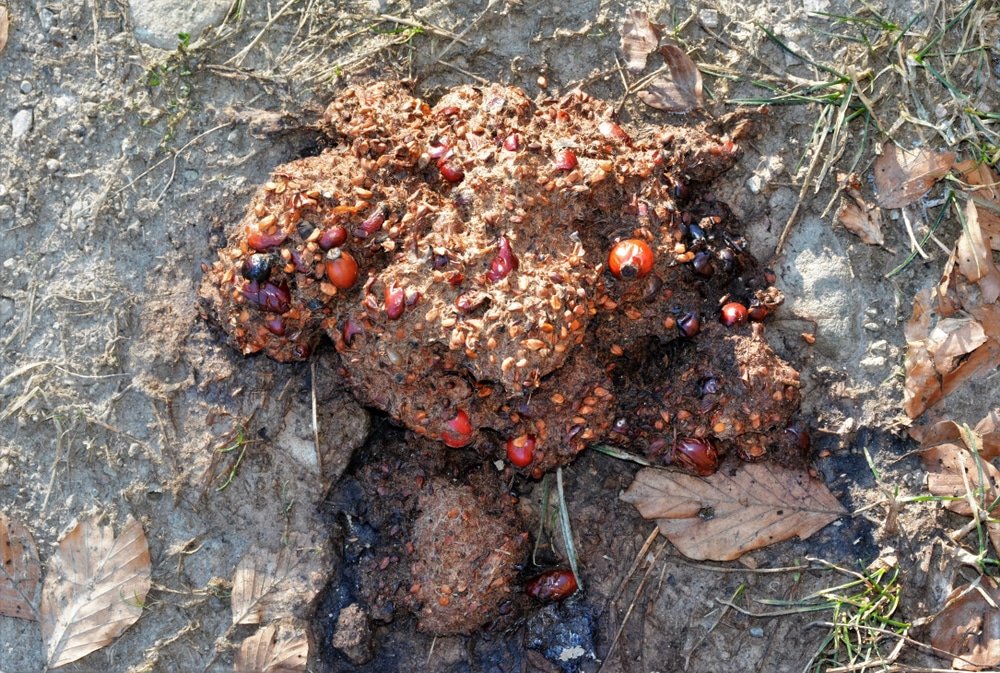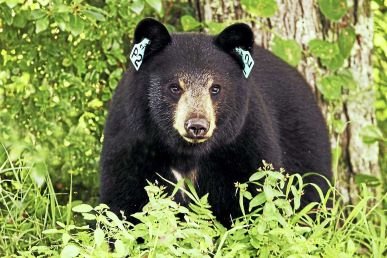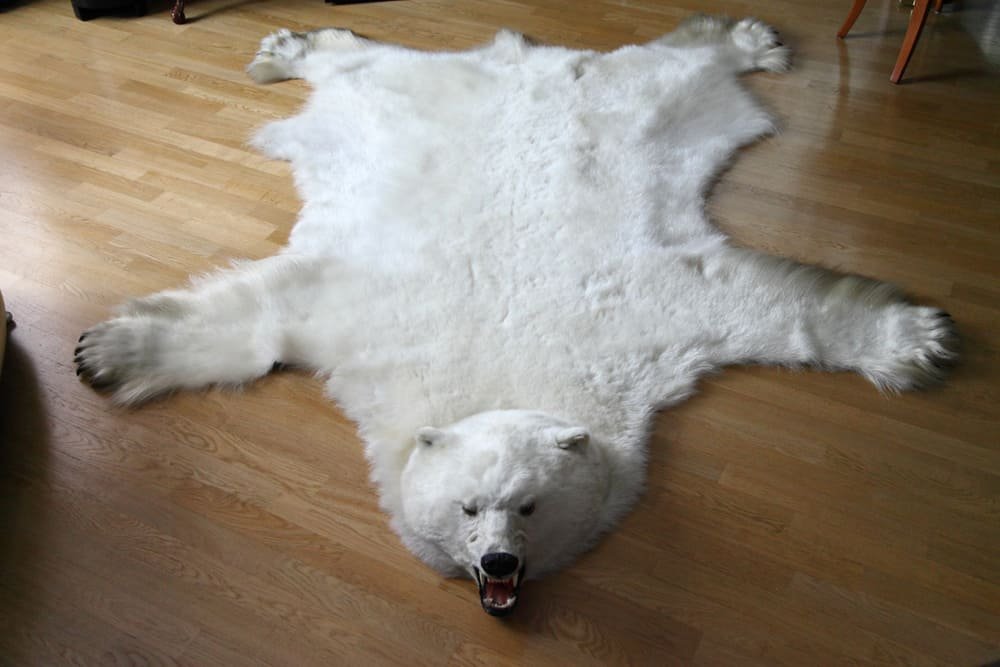Have you ever wondered what secrets lie hidden in the woods? Believe it or not, a pile of scat can tell you a surprising amount about the furry (or not-so-furry) resident who left it behind. Welcome to Bear Scat, your one-stop guide to decoding the wilderness through the fascinating world of scat analysis!

Let’s face it—you’ve probably stumbled upon this blog with a grimace and a silent prayer that it’s not what you think. But fear not, nature enthusiasts! While “Bear Scat” might not be the most glamorous topic, it’s a treasure trove of information waiting to be unearthed.
I’m Jim Kitts, and I’m here to turn your frown upside down (or at least point it in the right direction) regarding bear scat identification. Believe it or not, this seemingly unpleasant topic is key to unlocking knowledge about the animals that share our wilderness.
Bear scat identification can help understand bear patterns, food sources, and travel areas, making it an invaluable tool for hunters and outdoor enthusiasts.
So, grab your metaphorical shovel (or perhaps a good pair of binoculars) and join me on this journey through the fascinating world of bear scat – and maybe even learn to appreciate (or at least tolerate) a pile of poop in its natural habitat!
Black Bear Scat: An Essential Guide

Bear scat – known as bear poop – is a goldmine for wildlife enthusiasts and researchers. Recognizing bear sign is crucial for identifying bear activity and understanding their behavior.
Identifying black bear scats can be challenging, especially when differentiating them from grizzly bear scats based on size and track characteristics.
Varying bear diets affect the shape, size, and content of the scat, with specific food sources like fruits, vegetables, and insects influencing its appearance. Why?
Because it offers deep insights into the lifestyle of these majestic creatures. Here’s everything you need to know.
What is Bear Poop?
Bear scat is the result of a bear’s digestive system, which affects the appearance of bear scat. So, what does bear poop look like?
The appearance varies based on the bear’s diet and species, affecting the smell, quality, and consistency of its excrement, as well as its habitat and species.
Size & Shape: Black bears generally leave behind droppings that are 0.5 to 1 inch in diameter. The larger grizzly bears, however, can produce scat up to 2 inches in diameter.
Color: Depending on their diet, scat ranges from dark brown to black.
Why Study Bear Scat?

Identifying bear scat is crucial to effectively understanding bear patterns, food sources, and travel areas. Observing nearby bear tracks can provide better clues about the species of bear present. Identifying fresh scat helps hunters and outdoor people practice good bear country protocol.
It also allows you to distinguish it from other droppings commonly found on trails, indicating recent bear activity. This knowledge is invaluable for hunting and fishing in bear country.
Studying bear droppings can reveal a lot:
Diet Analysis: Bear scats give clues about what bears eat, from berries to insects. The efficiency of a bear’s digestive system affects the contents of their scat, with certain foods like seeds and fruit skins often remaining partially undigested. A diet rich in vegetation leads to what is referred to as green scat, characterized by its olive-green color and the types of plants consumed by the bear. Their diverse contents and appearance can vary based on the foods bears consume, such as fish, insects, and other animals.
Health Checks: Abnormalities in scat can suggest potential health issues.
Conservation Insights: Bear poop helps in tracking population trends and understanding the impact of human activities on bear habitats.
Bear Scat Details to Note
Appearance: Identifying bear scat can be tricky due to the variation in bears’ diets. So, what does bear scat look like? Black bear scat resembles large dog droppings, often messy and variable in shape, while grizzly scat is often more segmented and can change significantly based on what the bear has been eating.
Texture: This can vary depending on the bear’s diet. For example, fruit-heavy diets might result in softer scat.
Contents: From bones to berries, the contents offer valuable insights into a bear’s diet and health.
How to Identify Grizzly Bear Scat
Size & Shape: Black bear scat is smaller and cylindrical, whereas grizzly bear scat is larger and more segmented. Brown bears, which include grizzlies and Kodiak bears, vary in size and shape based on their locations, such as Wyoming, Montana, Idaho, Washington, and Alaska.
Contents: By examining the undigested bits in the bear scat, you can understand the bear’s diet and potential health issues.

Behavioral Insights from Scat
Territory Marking: Bears mark their territory through scat. They often use specific areas called “latrines.”
Seasonal Changes: Brown bears’ scat composition changes with the seasons, revealing their varied diets throughout the year. Brown bears in regions like North America and Eurasia have distinct feeding patterns that influence their droppings. Their scat can vary in size, contents, and color, providing insights into their diet and the freshness of the droppings, which helps in understanding their presence in the area.
The Ecological Role of Bear Scat
Seed Dispersal: When you find bear poop, you can observe that its appearance and characteristics vary depending on the animal’s diet. For instance, when bears eat fruits, the seeds pass through their system and are deposited elsewhere via scat. This aids in seed distribution and even boosts germination chances.
Conclusion – Scat in Bear Country
Bear scat is more than just waste—it’s a key to understanding bears’ behavior, health, diet, and ecological role. Studying it can teach us about these remarkable creatures and their contribution to the ecosystem. Moreover, it emphasizes the interconnectedness of nature, where every piece, however small, has its unique place and function.
One recommendation – if you see bear scat, you probably should be carrying bear spray.






Your article helped me a lot, is there any more related content? Thanks!
Everything is very open with a really clear clarification of the challenges. It was truly informative. Your website is very helpful. Many thanks for sharing.
I’m very happy to uncover this site. I need to to thank you for ones time due to this fantastic read!! I definitely really liked every little bit of it and i also have you book-marked to look at new stuff in your site.
Wonderful article! We will be linking to this great post on our website. Keep up the great writing.
An outstanding share! I’ve just forwarded this onto a friend who has been doing a little homework on this. And he in fact bought me breakfast due to the fact that I found it for him… lol. So let me reword this…. Thanks for the meal!! But yeah, thanks for spending the time to discuss this issue here on your internet site.
Right here is the right site for anybody who wishes to find out about this topic. You understand so much its almost hard to argue with you (not that I really would want to…HaHa). You certainly put a fresh spin on a subject which has been discussed for many years. Excellent stuff, just great.
There is definately a lot to know about this issue. I like all the points you have made.
Can you be more specific about the content of your article? After reading it, I still have some doubts. Hope you can help me.
I don’t think the title of your article matches the content lol. Just kidding, mainly because I had some doubts after reading the article.
This is a topic which is close to my heart… Many thanks! Where can I find the contact details for questions?
Having read this I believed it was very informative. I appreciate you spending some time and effort to put this information together. I once again find myself spending a significant amount of time both reading and posting comments. But so what, it was still worthwhile!
Good post! We are linking to this great post on our website. Keep up the great writing.
I couldn’t resist commenting. Very well written.